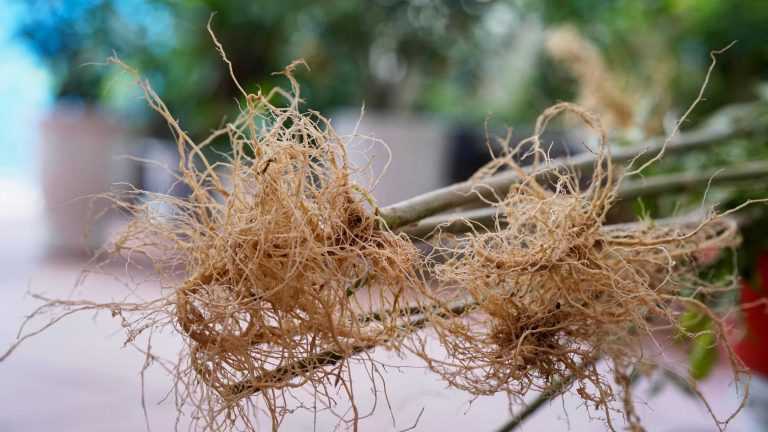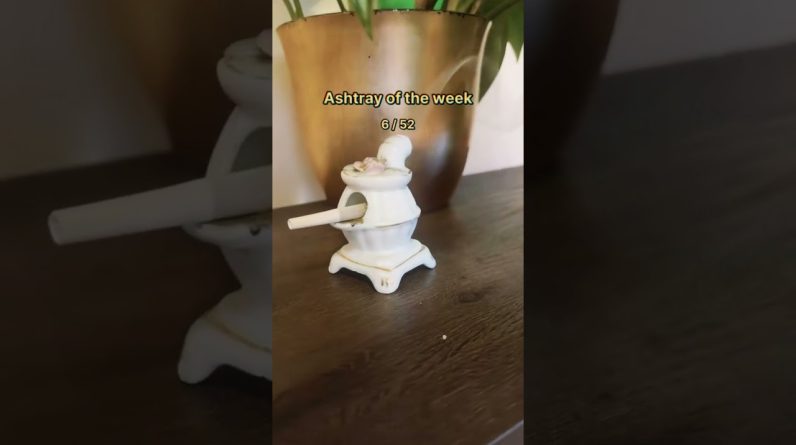Root rot is hard to identify since roots are invisible when Cannabis plants are grown on soil. You will start being suspicious when symptoms on the Cannabis plants appear, such as yellow leaves and wilting. If you dig in through the ground, you will see root’s being discolored, slimy, and mushy. Then, they start to strangle with each other. Root rot in a hydroponic system is easy to detect since they have mildew and a rotting smell.
How to spot root rot in Cannabis?
What is root rot?
Root rot is a severe condition that can kill your Cannabis plant. It happens to your crop when they are not in a favorable environment. When you overwater your plants without proper drainage, roots will drown and not take in oxygen anymore. Thus, they will start to wilt and die.
Roots serve as a channel for collecting and transferring water, oxygen, and nutrients for the optimal growth of your Cannabis plants. When organisms such as bacteria, algae, and fungi attack the roots, it will adversely affect your crop, making the roots brown and slimy. As this happens, roots can no longer absorb nutrients and water, resulting in your Cannabis plants dying.
How to identify root rot?
As a cultivator, you have to be wary of how your Cannabis plants look outside. There are symptoms in your crops that are caused by root rots. If this happens, you have to get a closer look at the roots to evaluate whether they are infected or not.
- Brown and burnt edges in the leaves
- Pale and yellow leaves with brown spots
- Curled-edge or cupping leaves
- Abnormal and stunted growth
- Weak and wilt in its total appearance
- Smelly run-off water
- Leaves falling and dying rapidly
- Plants absorb less water
Root rot begins underground, making it hard for someone to notice it since it is invisible to our senses until the plant disease adversely affects our plants outside. You cannot directly say that it is root rot until you have dug into the plant’s root system and see how it looks. Of course, you will get suspicious when your Cannabis plants start to wilt and have yellow leaves with brown edges.
Root rots feel soft, watery, and appear to be discolored. Then, it will start to lose its outer and interior layer, making it stringy or thin in texture. Also, though every infection caused by root rot slightly varies, brown roots are usually the main symptom. The sick section of the root appears to be slimy or mushy. Then they will start twisting together.
Identifying root rot should not be difficult if you are using a hydroponic system. Unlike a soil-based growing system, where you have to dig into the soil and look more precisely at the roots. Roots are visible in a hydroponic system, making it easy to evaluate their condition—one way is to smell them. It is likely a root rot if it has a mildew or rotting smell. Also, another symptom is when the roots appear brown-colored instead of white or cream.
What causes root rot?
The fungi Pythium is the main culprit that attacks the root of your Cannabis plants. Usually, they attack seeds and seedlings, putting the young crops’ lives at threat. They adversely affect those already weak, damaged, and or nutrient-deficient crops.
Using soil as a growing medium is prone to root rot when water stagnates. If your Cannabis plants sit on water exposed to light for a long time, the roots connect to a breeding ground for the harmful organism.
Aside from that, several factors may trigger your crops that will result in root rot. Thus, you have to be careful with the following to make your Cannabis plants safe from the destructive disease:
High Soil or Water Temperature
Cannabis plants are prone to root problems at higher temperatures. A warm reservoir makes it easier for bacteria to reproduce.
Too Cold Grow Room
The excessive low temperature in your growing medium can shock your Cannabis plants’ roots and make them wilt. Later, resulting in root rot.
Overwatering
Overwatering your crops can result in the dampness of your growing medium. As a result, it will provide an ideal place for unwanted fungi to thrive. In addition, the absence of drainage holes in your pot can cause water to stagnate.
Muddy or Thick Soil
If your soil is too thick or muddy, it will prevent roots from getting enough oxygen. Ideally, the soil has to be rich and fluffy.
Small Plants in a Big Pot
Seedlings planted in a big container will experience the trouble of getting oxygen at the roots. Also, overwatering in their pot will drown your seedlings.
Big Plants in a Small Pot
There is a big chance of overwatering in a small pot planted with big Cannabis plants. Thus, your crop can’t drink up all the water in the soil.
Overgrown Plant in a Container
When your plant has overgrown its container, the roots will start circling the outside of the container, resulting in watering and nutrient problems. Your crops become rootbound, developing roots into a dense and twisted that they can no longer allow space for further growth.
Growing in a Hydroponics System
Root rot is very likely to happen when growing in a hydroponic system. It occurs when there is not enough oxygen in the water. Also, the absence of air rock that will oxygenate the water can cause oxygen deficiency.
How to treat root rot?
When your Cannabis plants get root rot, the first thing you have to do is to check if you can still save them. If the entire root system becomes mushy, it is too late.
On the other hand, if there are firm, white, and healthy roots, you can treat them and restore the health of your crops. Save them by replacing fresh soil containing all needed nutrients to recover. Ensure that your growing medium is draining well.
Oxygen-rich water is essential to regain the health of your Cannabis plants. If you are growing Cannabis hydroponically, you can use an air pump and large stones for your hydroponic system to ensure oxygen is dissolved within the water. Ensure two outlets and one air pump for every ten gallons (38 Liters). The more water movement and bubbles in your hydroponic system, the more oxygen will easily dissolve within the water.
How to prevent root rot?
The best way to prevent root rot is to avoid its underlying causes. You may refer to the above mentioned causes of root rot to know where you will start.
Regulating Temperature
Keep the temperature of your growing environment between 68° to 77° Fahrenheit (20°-25° Celsius) during the vegetative stage. During the flowering stage, regulate it between 65° to 85° Fahrenheit (18°-29° Celsius).
Setting Up Watering Schedule
At the seedling stage, it is recommended to water your plant twice a day at first, focusing more on frequency rather than amount. Then, daily watering is advisable when using small pots during the vegetative stage. Switch to watering every two days if you have large containers. During the flowering stage, your plants consume the same volume of water as they did during the late phase of the vegetative stage.
Planting on Rich and Healthy Soil
Thick and muddy soil will deter roots from absorbing enough oxygen for your Cannabis plants. Thus, using healthy soil is a must to let roots absorb oxygen and essential nutrients for the healthy growth of your crops.
Using Appropriate Container
Planting your Cannabis plants in a right-size container will make roots spread out and grow accordingly without getting damaged and twisted. When your plant grows bigger, you need to transfer it to a larger container to avoid rootbound roots. Also, make sure to have an appropriate drainage hole in your potted plants for run-off water. You may also add perlite to improve drainage at the roots.
How to improve the health of your Cannabis roots?
Most Cannabis cultivators are focused on developing roots of young plants for the firm foundation of crops. Without an appropriate root system, your Cannabis plants will not thrive. Here are some practical tips to keep your Cannabis plant root healthy:
Providing Enough Oxygen
Roots absorb oxygen during cellular respiration, a process in which energy is created. Thus, your Cannabis plants cannot make the necessary energy for the root to keep growing without oxygen.
You may consider the following to ensure a healthy flow of oxygen into the root system:
- Let dry period between watering for oxygen absorption.
- It will limit oxygen intake from the surface when plants are buried on the ground inside hard pots. Thus, use a smart pot made of porous material that allows oxygen through the sides.
- Add perlite, vermiculite, or peat moss. These materials help fluff up the soil, giving more space for oxygen to flow through.
- Using complete soil boosts fungus, insects, and microbes that help soil keep loose, allowing roots to develop throughout the soil.
- Keep your roots submerged in water when growing hydroponically. Keep track of the oxygen level to ensure that your Cannabis plants receive enough oxygen.
- When tiling soil, keep off the soil as much as possible to prevent compacting that will hinder oxygen flow.
Regulating Temperature
Cannabis roots are active at night, especially when around 75° Fahrenheit (24° Celsius). The air intake should be below the canopy and exhaust above the canopy to ensure fresh cycle air when growing indoors.
When growing Cannabis outdoors, planting a cover crop, like clover, together with your Cannabis can maintain soil temperature while guarding the topsoil layer.
Putting hay around the base, 6-inch away from the stalk of each Cannabis plant can help regulate temperature. Keeping this distance ensures that moisture in your hay does not touch the stem of your Cannabis plants.
Watering Appropriately
Roots need water to grow. As your Cannabis plants get bigger, you have to widen the watered area to guide roots to the edges of the pot as they look for available nutrients in the soil. On the other hand, watering too far away from the roots may result in standing water. It will cause problems such as root rot and mold.
Before watering your Cannabis plants, ensure that the topsoil is dry. Feel the soil by putting your finger 1-2 inches down to check if your plant is ready for watering.
If you want to learn more about watering cannabis plants correctly, you should check out our video about it.
Using Right Container
Roots need to explore space to seek water, oxygen, and nutrients. When the container is too tiny, roots will strangle and becomes root bound. When it happens, roots begin to die, and root rot can set foot that could kill your plants entirely.
When your Cannabis plant is too big for its original plant, transfer it to a larger container and add more soil. To evaluate whether it is too small, check the roots from the drainage hole. Transfer them to a bigger pot when roots are crossing over the holes.
Planting in the ground should be given consideration when it comes to space since you will not be able to move your Cannabis plants. Thus, provide plenty of room for your crops.
The post How to spot root rot in Cannabis? appeared first on Weed-Smart.
Source: https://weed-smart.com/how-to-spot-root-rot-in-cannabis/






